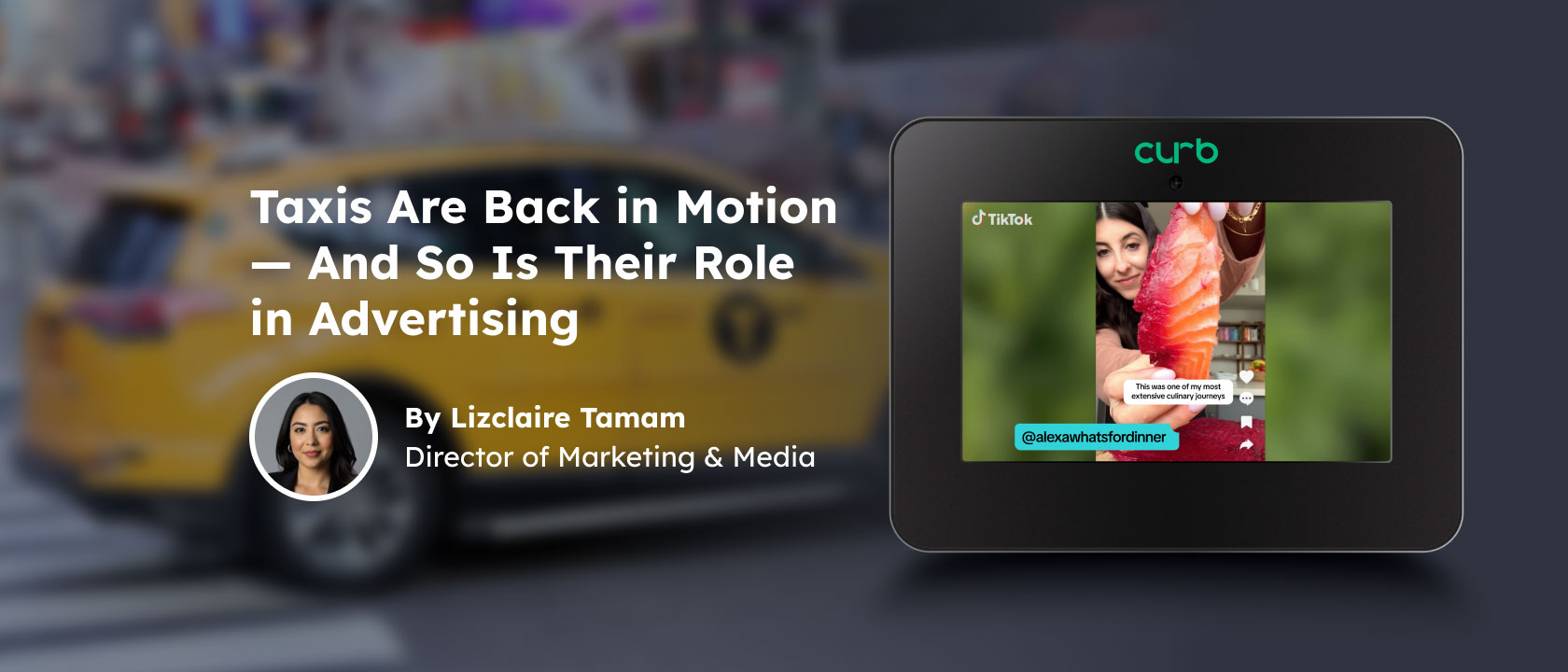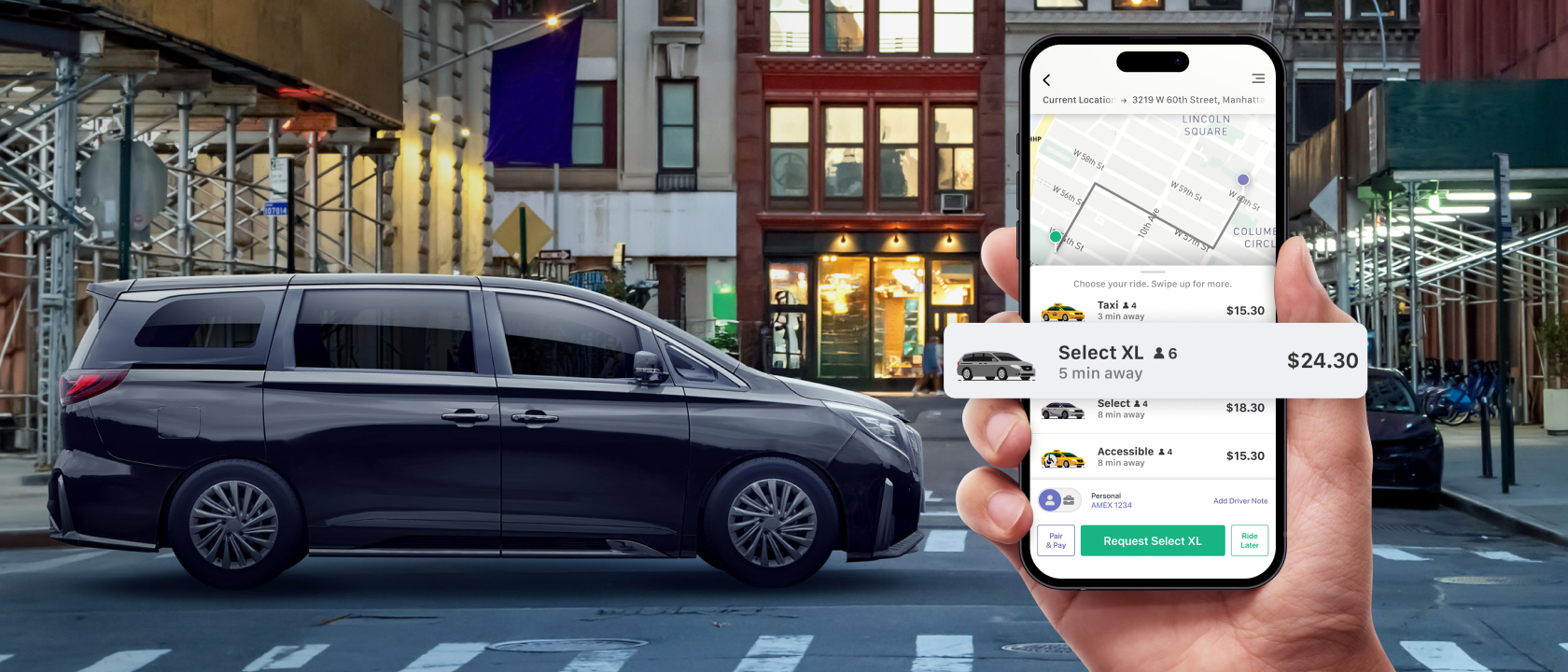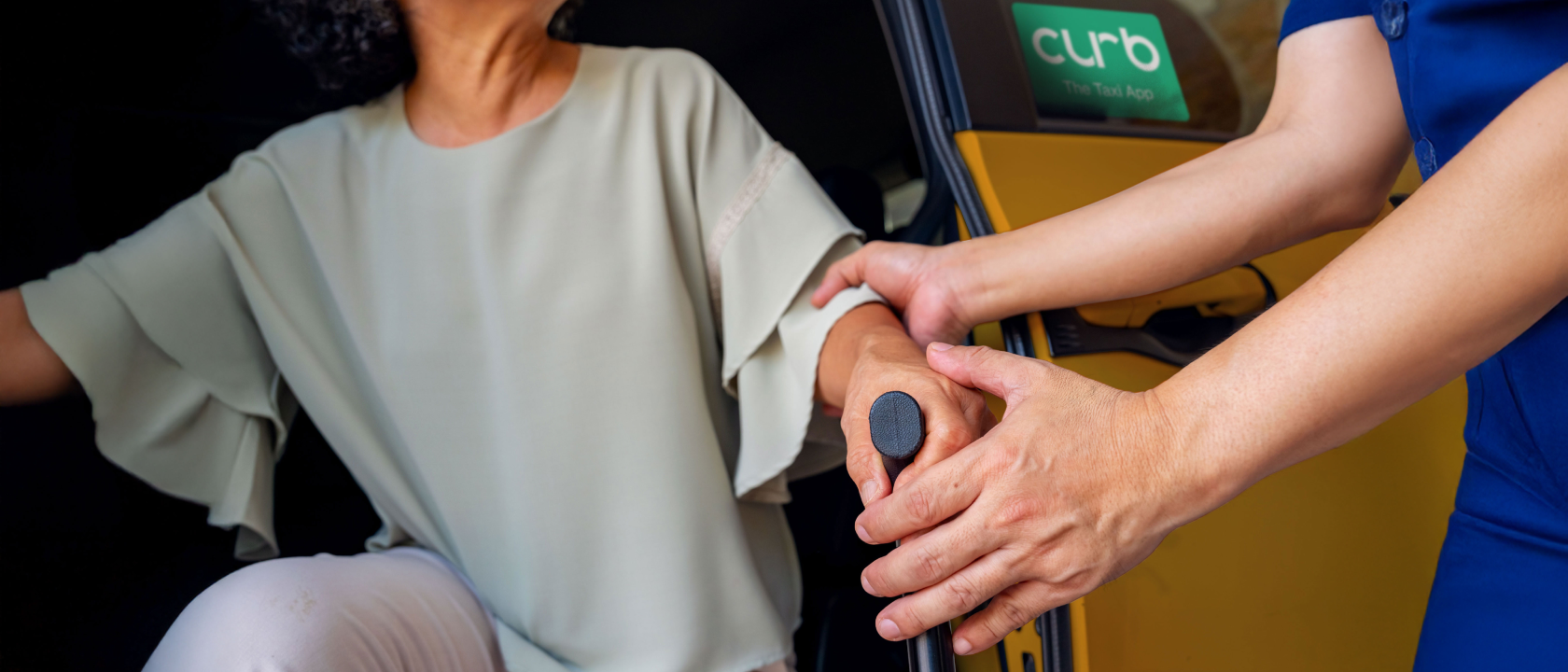By Lizclaire Tamam, Director of Marketing & Media
Rethinking the Role of Taxis in a Rideshare World
For years, taxis were written off as relics of a pre-rideshare era. The prevailing perception was simple: “everyone takes Uber and Lyft.” But that narrative no longer holds. Thanks to innovations like Curb Flow, which connects licensed taxi supply directly into major mobility platforms, we are seeing a marked increase in rideshare riders choosing taxis. In cities where Curb Flow is live, taxi trip volumes have grown 4x, proving that taxis are not only relevant, they are essential to today’s mobility and media ecosystem.
This shift is happening alongside broader industry momentum. The global digital out-of-home (DOOH) market is projected to reach $39 billion by 2030, driven by the demand for context-aware, brand-safe media channels. At the same time, marketers are grappling with challenges around audience fragmentation, fraud, and measurement. Mobility-based media — particularly inside taxis — is uniquely positioned to address these challenges while delivering scale.
Why Taxis Matter for DOOH
Unlike traditional OOH, mobility media combines the trust of physical presence with the engagement of digital content. Riders tune in to uninterrupted screen engagement upwards of 20 minutes or more. Taxi TV has been a cornerstone of mobility media for nearly two decades, building the nation’s largest in-vehicle video network. Today, it spans more than 15,000 screens in 65+ U.S. markets, generating over 184 million impressions every month.
This longevity matters. Taxi TV isn’t a new experiment, it’s a proven, scaled channel with years of audience engagement data behind it. And as advertisers increasingly demand full sight, sound, and motion in a fraud-free, guaranteed environment, Taxi TV continues to deliver consistent, measurable value.
And importantly, the audience is shifting. With rideshare users now being seamlessly matched to taxis, brands can connect with a diverse and growing ridership base, not just legacy taxi riders, but the same highly mobile, tech-enabled consumers advertisers are already targeting elsewhere.
Beyond Placements: Content as Currency
In an era of content fatigue, engagement is less about sheer frequency and more about curation and relevance. That’s why mobility media thrives on premium partnerships that align with the rhythms of riders’ journeys. On Curb, these include Newsmax, TikTok, real-time weather updates, and creative formats like Curb Creators.
Curb Creators is just one example of how storytelling can be adapted for the in-ride context, but the real innovation lies in the mix: recognizable digital content in a physical environment, designed to meet audiences where attention is naturally higher. This reflects a broader trend in DOOH: the blending of cross-channel experiences that extend digital engagement into the real world.
A Smarter Ecosystem
The future of mobility media isn’t just about screens in vehicles, it’s about building a connected ecosystem. At Curb, our technology spans the entire mobility value chain: driver dispatch, fleet management, payments, demand aggregation, and advertising. Because these systems are interconnected, advertisers gain the ability to leverage addressable targeting based on location, time of day, or trip context.
This ecosystem is also deeply integrated with the programmatic landscape. Curb partners with leading DOOH platforms like Vistar and Place Exchange, enabling advertisers to seamlessly activate campaigns through the same DSPs they already use for OOH and digital buys. On the CTV side, partnerships with OnCore and AdXact extend that programmatic flexibility into streaming environments, allowing brands to align connected TV strategies with mobility-based reach.
Together, these integrations ensure that mobility media is not siloed, it’s part of a broader omnichannel plan that connects commerce, content, and technology.
The Broader Context
The resurgence of taxis comes at a time when trust and attention are under pressure across media. In digital advertising, ad fraud costs marketers an estimated $84 billion annually according to Juniper Research. Meanwhile, consumers are increasingly resistant to intrusive formats, with ad-blocking adoption still rising worldwide. DOOH, and mobility media in particular, provide a brand-safe, unblockable environment where attention is less fragmented.
The conversation is also converging with CTV. As advertisers invest heavily in streaming, they’re seeking cross-screen strategies that blend the impact of connected TV with the brand-safe reach of DOOH. Mobility media fits neatly into this shift, extending sight, sound, and motion beyond the living room into real-world, contextually relevant environments.
At the same time, mobility networks are becoming critical urban infrastructure. Cities are grappling with congestion, sustainability, and equity challenges, and mobility platforms that deliver both transportation efficiency and advertising value are well-positioned to play a larger civic role.
Looking Ahead
Mobility media is no longer an afterthought in the advertising mix — it’s fast becoming a strategic priority. With taxi demand rising through integrations like Curb Flow, DOOH investments climbing globally, and advertisers prioritizing brand-safe, measurable channels, taxis represent a powerful and underutilized medium.
For marketers, the question isn’t whether taxis are relevant — it’s how to best integrate them into a broader omnichannel strategy. At the intersection of commerce, content, CTV, and mobility, taxis are proving that media in motion is not just the next frontier, but one of the most future-ready platforms for advertising today.












.jpg)






.jpg)









